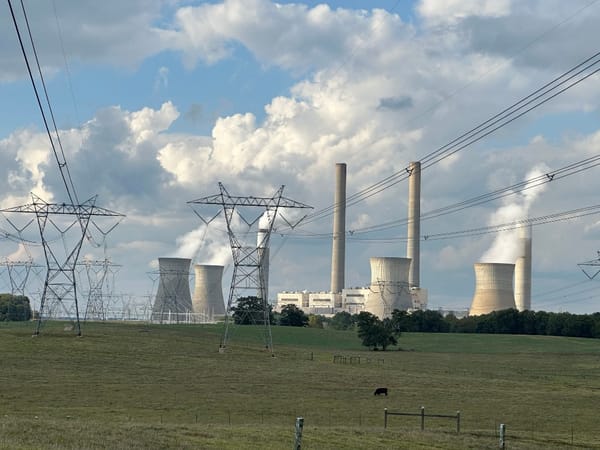Steve Truebner: Middle Mile Investment Essential to True Broadband Expansion
Increased focus on middle mile is necessary for access to effective connectivity.
Broadband Breakfast

The term “rush hour” is synonymous with congested roads, sluggish progress, and frustrated commuters.
Lesser known is “internet rush hour;” a network-industry term that depicts the window of time when a swell of data traffic pushes network infrastructure toward its own capacity limitations, creating bottlenecks that impact performance and reliability for the end user.
Network bandwidth demand in the United States continues to increase at a rapid pace, making comprehensive capacity planning a bewildering science.
- In 2022, broadband usage across the internet grew by 34% and another 29% in 2021.
- Video data now accounts for 50-75% of all internet traffic. Mostly attributed to streaming services, but two-way video platforms bring a higher dependency on upstream network capacity.
- By 2023, 5 billion mobile devices will be connected in North America – an increase of 40% from 2018.
- Technologies like artificial intelligence, augmented reality and automated vehicles are not far down the road and will command substantial bandwidth requirements.
Whether for roads or networks, traffic management and infrastructure solutions are constantly evolving to meet future demand.
Governments build roads for citizens to live and work, and then enhance those roads to adequately support the volume and types of vehicles that utilize the route.
Broadband networks share similar principles in meeting future capacity demands, but the task is far more complicated and dynamic.
These diverse networks are typically privately owned and improvements are compelled – and limited – by financial return factors as much as customer satisfaction.
These networks are indeed our digital roads. They are essential in serving the public good and facilitating social and economic advancement. The challenge to prepare these privately managed assets is vast and complex.
To meet the increasing demand for personal and commercial connectivity, the U.S. is entering an era of historic public and private funding for broadband infrastructure deployment. This includes the Infrastructure Investment and Jobs Act, delivering $65 billion in funding to improve broadband access and programmatically address the realities of digital inequity.
Broadband infrastructure is generally categorized as either middle mile or last mile.
Middle mile networks bring data from an internet backbone to a connection point where traffic is handed off to the last mile network, typically owned by an internet service provider, that ultimately services the end-user.
The networks are underpinned by an ecosystem of network technologies, edge computing and cloud storage essential to network operations.
The last mile and middle mile network infrastructure that make our connected experiences possible are highly interdependent in order to deliver high-speed, reliable and affordable internet service to the end-user.
This multifaceted network is the indispensable infrastructure that will support the digital upheaval that is touching everything in our modern society, and a citizen’s connection to the internet is often only as strong as the weakest link in the connectivity ecosystem.
Empowering the States
In the upcoming weeks, the National Telecommunications and Information Administration will release program guidelines for the Broadband Equity, Access and Deployment Program ($42 billion) to be distributed to states, as well as the $1 billion dedicated to middle mile infrastructure development.
Specific to the BEAD program parameters, individual states will respond by submitting a five-year action plan that will be the guiding document for the strategic investment for their allocation of the $42 billion.
As broadband needs vary widely among states, it is imperative that the NTIA empower states with the flexibility to include additional strategic middle mile investments deemed critical to their local broadband landscape.
Many states have rural areas that simply lack sufficient middle mile connectivity as a precursor to last mile services.
In the past, broadband expansion funding has been primarily directed toward last mile infrastructure, which is undeniably important, but has also had the unintended consequence of fostering limited competition and enabling single service provider monopolies.
Meaningful middle mile investments, in concert with last mile deployments, will better prepare communities for the digital future and support the objectives of accessible, affordable broadband set out in this legislation.
There are a wide range of middle mile partnerships that states can consider as components of their holistic broadband plans, including utility partnerships, regional middle mile cooperatives, statewide middle mile initiatives and locally organized public private partnerships.
State broadband offices will be managing an extraordinary amount of funding in the upcoming years.
With local market knowledge and a holistic mindset to building the broadband infrastructure, we can be confident that this generational investment is future-proofed to avoid the traffic jams and network disruption caused by capacity constraints and can deliver on the fundamental promise of fast, reliable, and affordable connectivity.
Steve Truebner is a Sales Director at Black & Veatch. He has more than 20 years of experience working with the public sector. Specializing in public-private partnerships, he has led a wide range of energy, infrastructure and technology deployments across 30 U.S. states. Steve’s focus at Black & Veatch is on broadband expansion and intelligent infrastructure solutions with cities, states and utilities. This piece is exclusive to Broadband Breakfast.
Broadband Breakfast accepts commentary from informed observers of the broadband scene. Please send pieces to commentary@breakfast.media. The views expressed in Expert Opinion pieces do not necessarily reflect the views of Broadband Breakfast and Breakfast Media LLC.









Member discussion